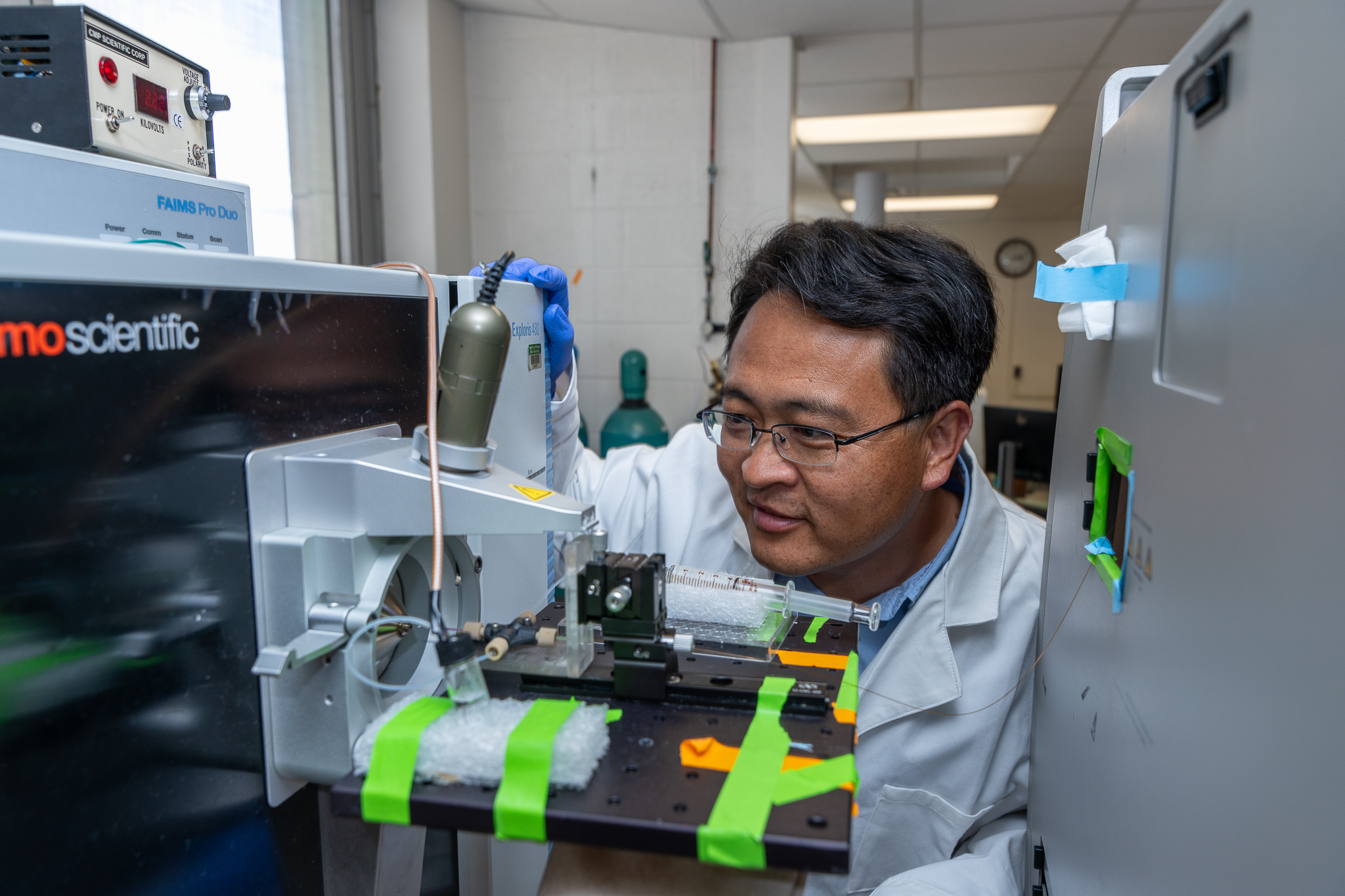MSU researcher Liangliang Sun has received a prestigious grant from the National Institutes of Health, or NIH, to support his groundbreaking “top-down” study of proteins.

The five-year award, which is known as a Maximizing Investigators’ Research Award, or MIRA, is worth $2.2 million. The grant will support a novel form of mass spectrometry for studies of human cancer cells and zebrafish early-stage embryos — work with applications in cancer biology and developmental biology.
In top-down proteomics, researchers examine intact proteoforms, which are different forms of protein molecules derived from the same gene.
One might think of proteoforms as different outfits a person might wear. Though the person remains the same underneath, their style can vary widely depending on the occasion.
Similarly, while proteins are derived from the same gene, their specific proteoforms can greatly influence cellular function and behavior.
Being able to measure proteins in a proteoform-specific manner offers researchers the opportunity to study their impact on diseases and organism development.
“When we study biology, we’re really studying proteins,” said Sun, who is an associate professor in the College of Natural Science’s Department of Chemistry.
“With top-down proteomics, we’re trying to offer a bird’s-eye view of all the intact proteoforms in a biological system.”
Building the atlas
Sun’s MIRA will seek to tackle what he calls the “enormous knowledge gap” in protein studies to create the first proteoform atlas of human cells.
Such an atlas will be invaluable for other researchers and help advance the Human Proteoform Project, which seeks to map the human proteoform landscape — a scientific undertaking in the spirit of the Human Genome Project.
By focusing their efforts on a specific human cancer cell line, the top-down techniques developed during this project can be broadly applied to other biological systems.
To achieve these goals, the team will push the boundaries of one analytical technique known as capillary electrophoresis-mass spectrometry, or CE-MS.
Using this method, proteoform molecules are first separated by size and charge in a fused silica capillary under a strong electric field.
The mass spectrometry portion then determines the molecules’ mass, sequences and modifications with high-speed, sensitivity and accuracy.

Sun’s MIRA will also advance his group’s research into proteoforms crucial during vertebrate early embryogenesis. The team will be using the zebrafish as a model organism because of its genetic similarities to humans.
“We’ll use these novel CE-MS techniques to study the proteoforms that modulate embryonic development during the first day of an embryo’s life,” Sun explained.
This MIRA also supports Sun’s efforts to promote diversity and inclusivity in research-related activities.
This includes training graduate students with diverse backgrounds in multidisciplinary research, as well as organizing symposia at national meetings to promote early-career and female researchers in the field.
The collective research supported by the Sun group’s MIRA will ultimately advance our understanding of critical questions in cancer biology and developmental biology, as well as create an invaluable body of knowledge centered on proteoforms.
“By determining the specific forms of proteins expressed in cells, we’ll be creating a new knowledge base,” Sun said.
“This is fundamental for advancing protein function studies, early disease diagnosis and therapeutic development."
This story originally appeared on the Department of Chemistry website.